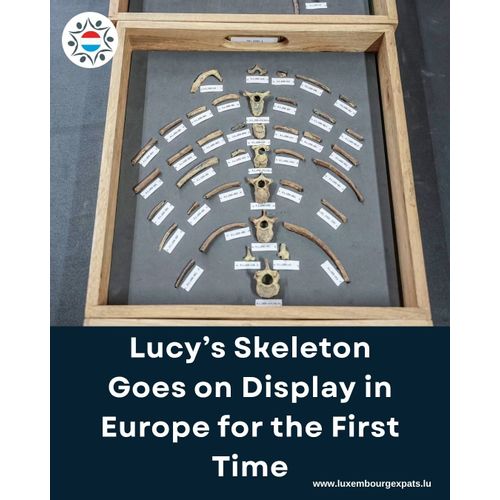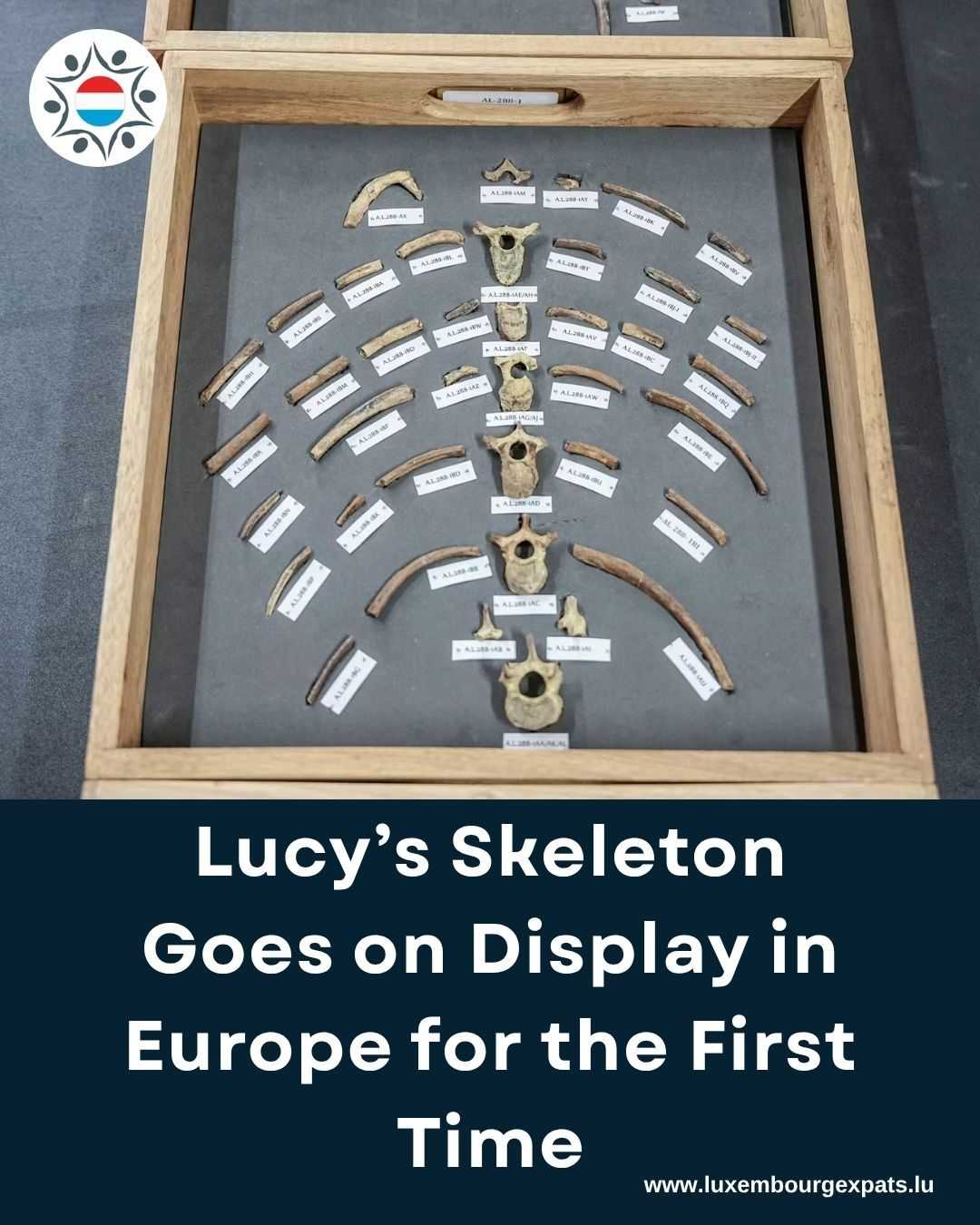Lucy’s Skeleton Goes on Display in Europe for the First Time at Prague’s National Museum
LuxembourgPosted on 07 October 2025 by TeamFor the first time in history, the world’s most famous early human ancestor, Lucy, will be displayed in Europe. The National Museum in Prague has unveiled a rare exhibition featuring the 3.18-million-year-old remains of the iconic Australopithecus afarensis, discovered in Ethiopia in 1974.
The precious collection, consisting of 52 bone fragments — including teeth, skull, pelvis, and femur pieces — arrived in Prague in mid-August. The fossils have only left Ethiopia once before, during a tour of the United States between 2007 and 2013, according to museum director Michal Lukeš. He described the exhibit as a “historic moment” and praised the 60-day loan granted by the National Museum of Ethiopia as an extraordinary gesture of scientific and cultural cooperation.
Alongside Lucy, visitors will also see the skeleton of Selam, a young Australopithecus child who lived about 100,000 years before Lucy and died at the age of two years and seven months. Discovered in 2000, Selam has never before left Ethiopia, making this exhibition doubly significant for both science and the public.
The exhibition’s opening on Monday will be attended by Donald Johanson, the American paleoanthropologist who co-discovered Lucy, together with Czech Prime Minister Petr Fiala and Ethiopian Minister of Tourism Selamawit Kassa. The name “Lucy” famously comes from the Beatles song “Lucy in the Sky with Diamonds,” which the excavation team was listening to the night the fossils were found in the Afar region of northeastern Ethiopia on November 24, 1974.
Standing less than 1.10 metres tall and weighing about 29 kilograms, Lucy was believed to have been between 11 and 13 years old at the time of her death — considered adult age for her species. Usually kept in a secure, non-public room at the National Museum of Ethiopia in Addis Ababa, Lucy’s remains are among the most valuable paleoanthropological treasures in the world.
Her discovery transformed our understanding of early human evolution. “Lucy’s skeleton revolutionized science — both because of its exceptional preservation and its age,” said Abebaw Ayalew Gella, director of the Ethiopian Heritage Protection Authority. He called her and Selam “ambassadors for Ethiopia, the cradle of humanity.”
Though once dubbed the “grandmother of humanity,” Lucy is now seen more as an evolutionary cousin or aunt, as her direct link to modern humans remains debated. A 2016 study suggested that she spent much of her life in trees — and may have died from a fall.
Since Lucy’s discovery, numerous other ancient human relatives have been unearthed across Africa, including Ardi (4.5 million years old) and Toumaï (7 million years old). Yet, even among these prehistoric icons, Lucy remains one of the most enduring symbols of humanity’s distant origins.
Her brief European appearance in Prague offers visitors a once-in-a-lifetime chance to stand face-to-face with the ancestor who forever changed how we understand where we come from.
Join the community of your own - #1 home-grown LuxExpats app
SignUp Free : luxembourgexpats.lu
I am your contact
Team
Chat









